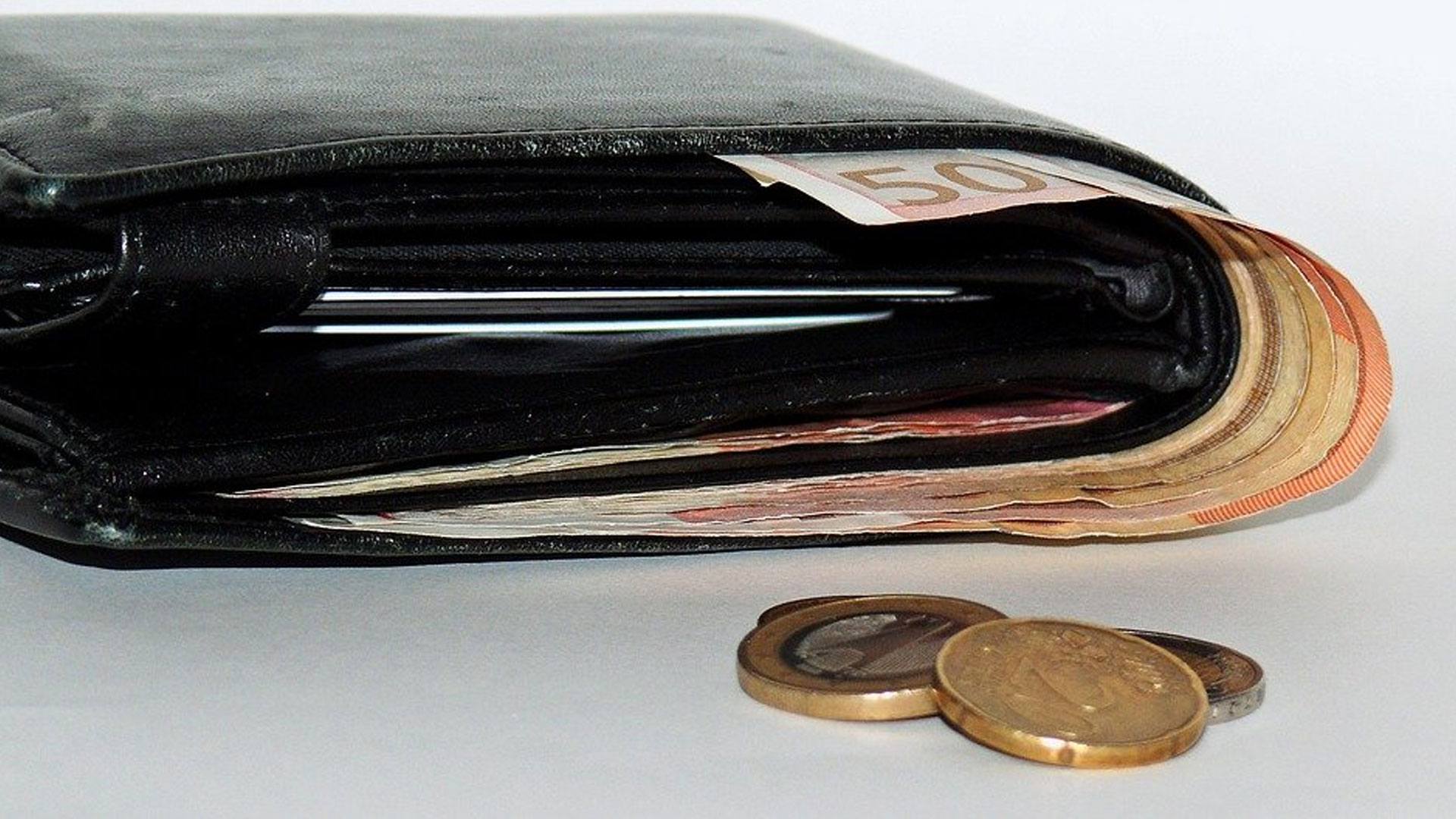The Poor Man’s Angel Investing: A Journey into Crypto Testnets
As I mentioned in a previous article, around 2019 when testnets were getting started, our head researcher at the time, proposed that we get involved as deeply and as quickly as possible into this new venture. I did not agree, as I viewed long-term holding of cheaply obtained coins as the safest way of creating the highest possible ROI over several years. Safety of capital is paramount to me and I believed Testnets would provide low returns with a need to retrain and hire specialists.
At the same time, I viewed Angel Investing as the natural extension of my “Safety First” philosophy. Seed investment in a promising team/idea would surely net the highest returns, and our company is built around a deeply long-term vision. Briefly, as described in my books, it is my belief that if one can identify a protocol in its early stages that is likely to keep operating and updating over at least a 5-year horizon, profits will take care of themselves.
Managing money for a trusted pool of investors deeply committed to this philosophy has its benefits; I don’t need to worry about the day-to-day. But having kept our operation small, we do not have the “brand” that other more prolific Angel Investors may bring to the table. Operating from South America, we do not have the connections or “cachet”. It’s actually a hindrance.
Around 2020, we were knee-deep in a pre-launch token I had absolute faith in and was interested in making an Angel Investment. I contacted the team through Discord. Getting in touch with the team directly was not easy. Teams receive a lot of spam, and again, we are not a “brand name”. Our call with this team was brief. I offered them up to a $1M investment, no strings attached, for a SAFT at whatever price they were offering their other investors. Sounds like a good deal, right?
We were politely, but summarily shot down. And I was told why quite clearly. We brought nothing to the table other than money, and generally speaking, in crypto, for quality teams, money is cheap. This experience caused a paradigm shift in my mind, and I realized that the things that made us unappealing to quality projects were insurmountable unless I was willing to relocate and build a brand by investing in lower quality projects and networking from scratch. This would involve the tearing down and rebuilding of our operation and constituted to me a non-starter.
Again, this was around the same time that our head researcher got into testnets. I am ashamed to say she had to drag me kicking and screaming into our first operation, a protocol that even to this day we are heavily invested in. Our average buy price, due to the high testnet reward allocation, cheap entry price for additional buys, and staking rewards, is below the lowest public price this token has ever traded for. Testnets, I came to realize, along with intelligent and opportunistic asset allocation, are a poor man’s from of Angel Investing.
Changing the numbers a bit for obvious reasons, this coin sold to seed investors at around 3.5 cents. Our average entry price is much higher than that, around 20 cents, but the interesting part is that due to our large “free” allocation and staking rewards, this is lower than the about 35 cent lowest historical trading price. Is this the slam dunk that actual Angel Investors made? No, but it is a dunk nonetheless.
Now, of course, this was not a “free” allocation. To those unfamiliar with testnets, operators provide infrastructure in the form of servers and expertise to pre-release networks to facilitate testing and modeling with a large number of nodes. Basically, operators provide free infrastructure on which teams can test their code at scale. And the reward is an allocation of tokens, that can range from a small payment to several hundred thousand dollars, within an average 2.5 year period start to finish.
The risk is one is never sure which protocol will provide the ultra-high returns and which one will flop. Clearly, other than time, the node operators’ costs are server time, which can add up. But this rarely exceeds one or two thousand dollars over the lifetime of the testnet; and the rewards can be enormous.
After having participated in over two dozen testnets, I can say that losses can only be time and server cost. If you are a full-time crypto operator, this is your job, so the time factor is moot. And ALL testnets provide some form of at least marginal return. So the most you stand to lose is around one thousand dollars over a 2.5 year period, and the most you stand to gain is low to mid-six figures in the same time period, an asymmetric bet if there ever was one.
Is Angel Investing a better bet? It sure is! On the model example provided above, seed round investors can and have exited at an order of magnitude better rate than my operation has, even considering the fantastic economics of testnets. But unless I am willing to uproot and rebuild my business in the US or Europe from the bottom up, Testnets are a poor man’s Angel Investing whose returns are more than satisfactory. If you can, get into testnet operation; it’s a great way to more safely invest in crypto.
Blockfi and Human Stupidity
Blockfi and Human Stupidity
Today, I would like to discuss how the heights of greed degenerate into human stupidity and why “enough” is never really “enough”. But first, I would like to share that I learned a new word, and this word is central to understanding both the fine line between greed and stupidity, and recent crypto events: rehypothecation.
Rehypothecation is a word that can only be born out of the financial field. It represents something that is not only illegal, but also unthinkable in any other field; it will basically land you in jail ten out of ten times elsewhere. It means lending out assets you have received as collateral to third parties for use in speculation. Notice I did not say “investment,” because the model requires that the assets be at all times kept whole, and usually callable within a short amount of time; both conditions not commensurate with investment which, as Mr. Market has taught us, can not guarantee neither the short term integrity of funds nor their quick repayment without sacrificing positions greatly. Investment is a long term game and rehypothecation requires short term thinking. The client may want his assets back at any time.
A client recently reminded me that a year or two ago, I recommended Blockfi to them. I admit to this fault, and I will say, to attempt justification, that I let my brain talk me into it and ignored my gut. This is something that has often served me well, but, alas, Blockfi is an edge case. You see, it struck me as a business an idiot could run, if the idiot had any common sense. Earn platforms started out with the following model: Receive crypto deposits at 6% interest, charge 12% interest on overcollateralized loans. Collect the difference. Simple.
As a student of financial history, I should have known better. I imagined Blockfi to be akin to a pawn shop. You leave your 1200 dollar gold necklace with the pawn shop and receive a 300 dollar loan. As long as the pawn shop doesn’t get robbed (or is insured) it is highly unlikely it will lose money in aggregate on this sort of loan. The fact that pawn shops can be traced back thousands of years, way earlier than the common era, speaks to the power of the business model.
But I forgot about the goldsmiths. Before there was fiat money at scale, there were goldsmiths. In the 17th century, goldsmiths held decent amounts of gold already, and already had to pay for the security and infrastructure to maintain this gold; so people started leaving their personal gold with the goldsmiths and getting paper markers in return. They traded the paper markers instead of the gold and this is one of the early forms of representative money. But the goldsmiths got wise.
The goldsmiths essentially figured out that they could issue more scripts than the gold they had in reserve, because people were highly unlikely to all want their gold back at the same time, and in this way they created money out of thin air. They also put at risk their clients assets, because when the run came, there would be more script then gold and many clients would be wiped out. There was more than one bank run. And perhaps this is the reason that pawn shops are not the same as banks nowadays. Banks just love leverage, whereas a pawn shop owner that loses your family jewels speculating with them is liable to go to jail; or get shot by the consignor.
I never thought of it this way, but there is really more honor in being a pawn shop owner rather than a banker. Or perhaps the incentives (getting shot) are better aligned. It’s a more person to person business. Unlike Blockfi. Blockfi took the model and did two things that went beyond greed and took that great leap into stupidity. They not only took demand deposits and lent them out in undercollateralized loans (breaking the first promise), they rehypothecated assets entrusted to them as collateral (breaking the second promise). They also magnified their exposure by focusing on attracting as much lending capital as possible by offering above market rates on loans they were not making. Essentially guaranteeing month to month, break neck losses on their loan books (stupidity).
There is a glorious book that recently came out called: “Reckless: The Story Of Cryptocurrency Interest Rates” by Jonathan Bier, who describes the process. The end goal was basically to accumulate as much capital as possible from retail investors and pay interest out of the funds of venture capitalists who invested in Blockfi (and the other lenders). A friend originally described a similar process to me when he launched a website intended for trading of physical goods. He paid hundreds of thousands of dollars in Adwords and other promotional endeavors per month, with the goal of accumulating as many users as possible. He did this although the platform had near zero use, “Each user is worth $8 dollars when we sell the company,” he told me. I imagine Blockfi thought something similar about its borrowed “war chest”.
I don’t wonder what made Blockfi take a stupid simple pawn shop model and make it into a leveraged to the hilt bank, it was pure greed that degenerated to blind stupidity. Why make 6% when you can make 10%? Or more. But I do wonder about the moment they decided to cross the line. They clearly knew they were going from a basically no risk business to a highly exposed position in the most volatile, liquid market on earth. But I don’t think it was just greed. Imagine operating at that level: a few billion of funds under management and you get to call the shots. It doesn’t matter that the funds are not yours, you decide what you do with them. It must be a hell of a rush.
I think there are a couple of lessons to be learned here. First and foremost, you can’t trust people in finance. There is no risk they will not take when it’s your money and their extra 1% return. There is something that clouds the mind of operators when they think about that extra 1%. The other lesson is perhaps that we should use pawn shop rules in operations that promise financial safety. The Glass-Steagal act did this after the Great Depression, speculative funds are managed by speculative entities (commercial banks) and mom and pop “safe” funds are managed by retail banks. We should think of our allocation of funds in these terms: “speculative” and “investment”; and we should be told the truth about what type of investment we are making. Though this won’t help the client I referred to Blockfi.
When to Sell
When to sell. This is something I have been thinking about, ever since the last price collapse in 2018-2020. I lost a few million dollars in paper wealth back then. Perhaps I held on through the slow death of the bear market out of greed, that would be a fair criticism. I think a lot of it also had to do with ideology, I felt, and still feel, ideologically bound to some of the protocols whose tokens I hold. But perhaps I am being too kind to myself.
What I like to think was the problem is that I had never really considered the need of “selling” my crypto assets. I was planning on generational wealth, and this was my mistake; I had moved from being an investor, to becoming a collector of crypto assets. I think a lot of the problem has to do with the fact I like to read. I have read at least one hundred books related to what I like to call “it makes sense” investing, and probably a few dozen crypto books on top of that, and not one has dealt in any depth with the issue of “when to sell” your bag.
So, for my own ego, I will blame the failure on a dearth of literature. But I have had a few years to think about this problem and I have come to a few conclusions that I think are worth sharing. First of all, “the market cycle giveth, and the market cycle taketh away”. It is a foundational building block of our investment philosophy that crypto markets cycle quickly; perhaps more quickly than any other market of its size and liquidity on earth. This allows us to place bets on assets that will play out within about 3-5 years, not the ballpark two decades the U.S. stock market tends to cycle around. But this means that at least one price collapse of significance will tend to happen within that time frame, so “holding” is really not the right strategy.
I have come to realize the limits of my own investing philosophy. There is a clear and present difference between picking winners within a cycle or two and picking winners that will remain winners across many cycles or even generations of crypto assets. The only such winner I can think of other than Bitcoin, is Ethereum, and I don’t think there are many nascent Ethereums out there for us to find in any given cycle. Some are sure to come along, and I like to think we have found some that may reach that scale in the future, but we can’t bank on it. So the first thing I have gathered from all this is that long term holding for me now means a cycle or two. Not “forever” as I used to advocate.
Will we miss the next Ethereum this way? Most probably, but we will avoid many more duds than miss as many fantastic investments this way. Investing is a numbers game. The next consideration we should have when studying the issue of selling, is to practice detachment. I think that attachment to any community is detrimental to the long term health of your wallet. With exceptions related to established relationships, I purposely avoid participating in crypto communities and becoming entangled in their politics or mission. My mission is to make money, not get involved in a crusade.
I made this mistake with Bitcoin, and to an extent Bitcoin Cash. I became invested in the politics and lost sight of the goal. I think I am one of the few successful long term crypto investors out there who has not transacted meaningfully in the Bitcoin asset in nearly a decade. This was an ideological choice that has cost me greatly. I lost sight of the forest for the trees. Reflecting on this choice I have come to the conclusion that my ability for misjudgement, high as it is, is only worsened by my own ideals.
The literature is scarce but I have come across a great book recently, called “It’s not what stocks you buy, it’s when you sell that counts,” by Donald L. Cassidy, and although I am only a third of the way through, I can say it has changed my life. The book espouses a key idea from the very beginning and it is a way to gauge when an investment should be sold, that I think is both simple, hard to improve upon, and falls perfectly in line with the investment philosophy I have tried to lay out for you. The idea is that you should constantly ask yourself, regarding all your investments on any given day, “Would I buy this investment again today at this price?” and sell those that you would not.
This is a simple yet powerful idea because it works both ways. Since the FTX collapse (which I have called “Crypto Christmas”), I have advised everyone who has reached out to buy as many of the high quality protocols we have discussed as possible. And this is because “at this price,” there are a lot of things I would like to buy. But turn this around, pretend we are holding Mina we have purchased at $0.60 (the current price), and the asset goes to $20 dollars. Would I still be a buyer at that price? Perhaps, but I certainly would not be a buyer at $60, and by this point, the point at which I would no longer be a buyer, I should have sold out. It is a simple, yet clear and concise philosophy.
There will be criticisms by the quantitative investors. There are no numbers, or pretty charts to draw lines across here, but we are drawing on something deeper and more primal than “the trend”, our understanding of the value of whatever assets we hold. And value always trumps price.
I like to think that I am capable of learning from my mistakes, and I would like to help you avoid the mistakes that I have made, so in your crypto journey, it is important that you consider the triggers to selling an investment as you understand them. You should not become attached to an asset because it represents a philosophy you agree with, or because you believe it will be “The next Bitcoin,” these attachments breed error. An investment is merely a cash making machine, whose operation you will finance until such a point when the costs exceed the returns. And then you sell. In closing, I will paraphrase my hero, Ben Graham and say, “Investment is most profitable, when it is most businesslike.” And business is about practiced detachment and calculation. The goal is profit.
Why Tokens Have Value
Neck Deep in Incentivized Testnets
Neck Deep in Incentivized Testnets
I have always made the argument that the chances a crypto asset will “disappear” or “go bankrupt”, are inversely proportional to its number of users. The recent collapse of Luna shows what happens when holders lose confidence and begin to abandon a project en masse. But what about projects that are not being abandoned, but where we, like explorers of old, are charting new waters? What about being the first people on a new asset?
Well not the very first. But early, really early. As in we helped plan the expedition and have underwritten some of the ship building. Columbus couldn’t have done it without us. Is that a bet worth taking, when the outcome can not be precisely measured ahead of time? I am talking of course about incentivized testnets.
I have been…busy. But the word belies the chaos. You see my friends, I drank the incentivized testnet kool-aid, powdered the bottle it came in, and snorted it. It’s a great high, and after a year’s of work I’m slated to receive tokens on 7 high quality chains. Some of these tokens will come soon; others, like Solana, are at least a year of grinding away. But it hit me today as I contemplated a $3000 dollar VPS (Virtual Private Server) bill covering almost 20 machines, that I have come a long way from a couple of articles ago, where I advocated investing a few hundred dollars and some of your “cheap” time into incentivized testnet projects.
But I had a problem deploying capital. Our investment philosophy has a low inherent risk of loss, because we look for the right projects with the right qualities and discard all else. But this leads to multi-year periods of cash sitting in low interest accounts, undeployed. And since Wall Street put up a shingle in crypto land, seed round or first offering opportunities are nil. Straight crypto investing is where the big dogs play. And big dogs don’t play well with smaller dogs. Perhaps that is why I have become so enamored with incentivized testnets.
When I started investing in crypto in 2011, and certainly by 2012, there were very few “big dogs” doing it. No hedge funds that I can recall, that’s for sure, and an investor would have his pick of projects if he wanted to fund any of them; not that the cash for tokens model had been pioneered back then, but it’s a nice thought experiment.
Seed and early series crypto investing, at least for worthwhile projects, has not been about money for at least a few years, it is about who you are and who you know. The bigger the name the more easily you can get in on the ground floor, and there are teams of the Wall Street avant garde combing the world to invest in these projects. So what was a lowly investor to do? We focused on early release tokens, that is tokens that have hit the market recently, and that was fine for several years.
And then Wall Street came in and fucked that up too by taking over the platforms. Have you seen a Coinlist sale lately? There are up to hundreds of thousands of people queuing up to buy tokens on the first day. It’s like a lottery to these people, “Well my friends Coinlist sale tokens tripled, so why shouldn’t mine?” And all of a sudden launch day investing became “hopefully a few weeks down the road investing”. And this new mechanic mucked up our pricing advantage. It’s just too competitive to get in early. I am not saying straight token investing can’t be done, we have been successful at it for many years, including now, but I would like to emphasize at our current size, there is a better way. Incentivized testnets.
The good thing about incentivized testnets is that they are subject to the same mechanics we have been discussing on this blog for several years, but on a different stage of the protocol. By definition these testnets will generally be pre-launch (with some program exceptions like Solana) so the number of mainnet users or the general reception of the technology can not be judged until way after we have provided our sweat, toil and tears to a protocol.
But we can expect that our trusty old sorting aides: team, technology and funding; will give us a basic idea of whether this protocol has high survivability. We don’t need to project to take off immediately to cash in our testnet chips, we just need to know there will be enough people coming in the door after we prime the garden hose, to justify the time we have invested. No matter how high the incentives we receive, if no one is attracted to a protocol post launch, our investment is moot.
We have a slimmer margin of safety in this sort of bet than we do in our normal work. There are a lot of unknowns and up front investment. But a large proportion of protocols will attract some attention post launch, so it is unlikely any investment you make will be a total loss. You will probably not make all your money back if you are waiting for a dud to launch, but you won’t lose all of it either. That’s your first edge.
Your second edge is that as an incentivized testnet participant, you have a great handle on the team. You’ve interacted with them, you know who they are and how they react to pressure and to success. You know the technology inside out, you’ve been running bleeding edge software for months or years waiting for its launch. If you’re excited, someone else will be too. And finally, you just got paid in tokens. Do you value them? If you aren’t thinking of selling immediately by this late point, you probably have a good reason. You’re in a prime position.
What these three inside pieces of information tell you is not so much about the chances that people will hop on into the project and make it bigger, but rather that your fellow testnet jockeys will abandon it. The last thing you want is to be in a testnet where everyone is waiting to jump ship; I’m there on a couple of tokens, and it will be a slaughter. But it’s pretty hard for any team to mess it up that badly. Testnets are exploding in popularity, and by offering pre-launch participants rewards, network entrepreneurs have baked in users for the foreseeable future of the post launch network. It’s theirs to lose.
So circling back to investing in incentivised testnets, you have clear advantages as an early insider. You do not have a fixed investment, if you don’t like what you see down the road, you can jump ship any time. And your only investment is in VPS time. There is money to be made, because if you and your fellow testnet jockeys with the inside knowledge aren’t jumping ship, this suggests that at some point in the future, others will hop on as well. And that’s where our real money will be made. Moderate risk, high reward investing at its finest.
Crypto Growth is Free (as in Beer!)
The Magic Lock Box
Stubborn Pablo
I am very stubborn. This has been a great boon for my investment career, because I am quite indifferent to market cycles and the latest fads. I am proud to say I only invested in one ICO in 2017, and it turned out great (Tezos). I long ago committed to the teachings of Benjamin Graham, and they have been a safe harbor in crypto hurricane after crypto hurricane; but this inflexibility has led to my team having to sometimes drag me kicking and screaming, to a pile of profit.
Long before incentivized testnets became a thing, around 2018, our senior researcher, Ill call her “Eve”, noticed that Mina, a project we had already decided to invest heavily in, was giving away token allocations to testnet users. Several years later, in 2021, they also expanded this program by distributing large Mina token stakes to validators who participated in these testnets and met certain conditions. These validators made a 5% fee of the top off any block rewards, which at the time of writing (Nov 2021), amount to around $7,500 per month. The tesnet allocation ended up being 66,000 tokens, vesting once per year over 4 years. Currently valued at a total of $350,000. All this on a paltry investment of around $3,600 in VPS time and no more than a 200 hour time commitment, over the 18 month life of the incentivized testnet.
But when this new mode of distributing genesis tokens was pointed out to me, it promptly entered my right ear, and straightaway exited my left ear. Since the specifics of the incentive rewards would be announced only years down the road, I did not find the idea of spending an undetermined amount of time running Mina hardware, for an undetermined reward, at an undetermined date, appealing. After all, I planned to invest heavily in Mina with cash already on hand, and this newfangled “incentivized” distribution system struck me as a giant waste of time for what would likely turn out to be a measly reward. Seldom have I been so wrong.
Graham once said: An investment operation, is one which upon thorough analysis, offers safety of principle, and a satisfactory return.
To Graham, who made his investment bones during the Great Depression, investment was at its core, the management of risk and a defensive art. Above all, one must not lose capital, and each operation must be backed by a large margin of safety in terms of value. Eve’s suggestion, that we sink capital into running nodes for Mina, at a time when we were not sure of what the sale price of the token would be, or even the amount of the incentive reward, struck me as madness, because without any measurable value anywhere in the equation, there was no margin of safety (I thought).
But what “principle” (value) did I have at stake here, really? I value my time highly, but this conundrum reminds me a lot about what a reading coach once said to me: “If you want to read a book a week, you don’t need to sit down and read 20% of the book every weekday, you just sneak reading in where you can. You read on your break, on your commute, at night before bed. A half hour here, 15 minutes there, and without realizing it, you’ve finished your book”. The same applies here, I was looking at this as a huge, continuous, investment of time. But what if I could work on the testnet when my time was selling at a discount (with a large margin of safety)? At night instead of watching TV, or after work while my kids were doing their homework? This is cheap time. The cheapness of my principle (time) provided a large margin of safety.
Let us consider how to secure “a satisfactory return” then. There are spreadsheets circulating the internet with dozens of running and rumored incentivized testnet projects where people are staking out positions, sometimes before announcements, or even alpha deployments, are made internally by teams. I am willing to invest “cheap” time, but chasing down each of these testnets, would more than certainly eat into my “expensive” time, time I spend with on my core obligations; even as a professional crypto investor, I can not “afford” to try my luck, testnet by testnet. Especially when we remember the 92% attrition rate over two years of crypto tokens in general.
To maintain my margin of safety, I aim to invest only my cheapest time, thus sorting these incentivized testnets becomes a matter not just of sanity, but of profitability. Chasing each of them down, would, on average, cut my profits to near zero, because of the many duds I would be bound to run into. Much like with crypto investing, it is possible to sort incentivized testnets using a modified criteria we have explored before: “team, technology, and funding”.
First and foremost, sort for great teams. We should sort testnet candidates for great teams. LinkedIn, Google, etc. are great sources to track the trajectory of key individuals. It is possible to get one or two high grade people into a low grade project by promising incentives, but all round great teams are easy to distinguish and hard to miss, merely because most everyone has an excellent personal trajectory and clear roles and goals within the organization. People who look great on paper but do not have clear roles and means to help achieve the protocols mid and long term goals through insight or networking can be disregarded.
The incentivized testnets’ technology should be appealing. You are going to be investing a couple of hundred hours of your time into any given testnet, you better be interested in what it is trying to do, or you will not be able to hold on. The technology should be unique, and form the basis of an ecosystem others can build upon. A “platform” technology, one with building blocks that can be used to build upon is ideal. Think early ethereum and the myriad projects that have been built atop the smart contracts innovation; this is the best possible scenario. The protocol implementation must be unique, if not the technology. Mina uses Zero Knowledge Proofs, a technology common to other blockchains, such as ZCash, but Mina implemented a unique build, a blockchain that is never longer than a few kilobytes. This is the kind of technology we are looking for.
The testnet should be well funded. I am not referring to the amount of seed or A series funding committed to the project, but rather of the quality of the people doing the investing. I once reached out to a nascent blockchain project and offered a high six figure investment in the technology with no strings attached in exchange for tokens at seed valuation. I was turned down, because this protocol did not need help raising funds, they needed help finding investors who could open doors for them. Any project that will politely turn down my money, is a project I want to be invested in. The bonafides of the prospective testnet protocol investors are more important than the amounts committed to the token. There is a lot of “cheating” that can happen with venture capital commitments and announcements, especially at the periphery.
Protocols sorted in this way, will tend to have very high survivability, and thus will tend to offer excellent returns on your invested time and resources. In all likelihood, exponential returns. If your only cost is this same cheap time, and some VPS hours, it is hard to go wrong, in the worst case scenario you greatly improve your CLI skills as a node operator and the money you will spend on VPS operations (200 USD a month average for heavy use of 3 VPS’s) is money well spent on developing your skills as a crypto entrepreneur. There is absolutely no downside to selective incentivized testnet investing, whichever way it goes, you end up ahead. Even if the token goes to zero after launch (which is very unlikely if properly sorted). High quality incentivized testnets are as close to a free lunch as any of us are likely to get in our lifetimes.
I originally judged incentivized testnet operation as speculative, it was my impression that there was an absolute vacuum of information upon which to make a rational investment decision. But this was only because I misunderstood the cost of investing in these incentivized testnets, by investing cheap time ad a little money, with no downside (because even if the token disappears you have professionalized your skill set for a micro sum) you are making an asymmetric bet, because the upside of receiving incentive tokens on a future successful protocol, has exponential value. You can turn a $3600 investment over 18 months into $360,000. That’s a fantastic return. And if you lose? It cost you 200 bucks a month and some of your “free” time.
How to Value a New Crypto Asset
How to Value a New Crypto Asset
For the last few months, I have been thinking a lot about how to value, or at least gauge, whether a newly released crypto asset is trading at a price that favors purchase, or perhaps sale, if we are looking a few years down the road. The standard way of doing this analysis is by measuring a securities’ free cash flow into the future and discounting it back to today at an appropriate rate, basically valuing tomorrow’s income at today’s prices. By dividing this metric by shares outstanding we get an approximate price per share (or per token in our case). We are essentially aiming to buy the security at a discount of what reasonable analysis suggests the whole enterprise will make in the future.
Crypto assets have measurable free cash flows. They can be measured as staking rewards, mining rewards, and some other ways developers have found to incentivize users to provide services to the network. These free cash flows can be used to calculate the current return on investment (ROI) for the network and using a reasonable discount model, project growth into the future and thereby “estimate” whether buying a token today makes sense given our future projections for the growth of this token. The issue with this model arises because of crypto assets’ radical volatility.
The key insight I believe that i have made to crypto asset investing, is the observation that tokens which throw of this free cash flow (staking rewards, treasuries, etc.), and do so reliably into the future, will tend to appreciate over the long term, at the very least on par with inflation and most likely increase by at least an order of magnitude. This for the simple reason that because of these free cash flows, tokens will continue to be used and thus developed and as price climbs from these two factors, a virtuous cycle will ensue since price appreciation of each token will lead to higher free cash flows.
However, in a market where crypto prices can fall by 90% on a whim, in the short term, this sort of virtuous cycle is not enough. If users are not careful and do not have the ability to stick with it (crypto markets are highly cyclical) they may lose most of their money very quickly. To combat this phenomenon, we must acquire tokens with a large margin of safety (the lowest possible price). A difference in price acquisition of a few dollars today will have outsized effects on our returns five years from now. Even if free cash flows are high by fiat standards (high staking rewards and a high token price in fiat terms), if we fail to acquire our tokens with a large margin of safety, we are on very shaky ground.
In previous work, I suggested that buying tokens as close to launch as possible would be a favorable strategy to securing as close to a rock bottom price for the asset as possible. This observation was based on my experience in the market during the ICO era of crypto investing in 2017. This idea is now largely irrelevant. In today’s post-ICO world, where token offerings are extremely competitive and highly limited, other metrics of pricing are in order. I have found two metrics which I believe are useful at gauging a good entry price for a newly released token.
The first of these metrics is the token price relative to the market leader, in this case, Bitcoin. When I started investing in alternative crypto assets back in 2012-2013, Bitcoin had a near 100% measure of market dominance; today that number approaches only 40%. But Bitcoin still has the largest market capitalization of any crypto asset, currently approaching 1 trillion dollars, it remains the market leader. My insight is that we should be able to take Bitcoin (or the lead cryptocurrencies market capitalization if you are reading this from the future) and extrapolate from it a reasonable high and low ranges to aim for in any crypto asset purchase.
In my research, I have come to the conclusion that 1% of Bitcoin’s market capitalization is a good “moderate” price target for any crypto asset a few years after buying it. At the current 1T market cap for Bitcoin, I would be targeting 10 billion dollars as an average crypto network’s estimated market capitalization a few years after launch. This can be adjusted up or down depending on the quality of the network under analysis, but 10 billion seems like a good target and would currently put our cryptocurrency on the top 20 by market capitalization. This is not exactly “aiming low,” but it also makes sense because our investment philosophy dictates we only invest in the most outstanding projects; a much lower target could be used if we are less stringent about selection.
On the other end of this, I would generally like to make no less than ten times (a ten bagger) on my crypto investment over 5 years. I am being very conservative here as our investment philosophy generally aims for 100-1000 baggers. This would suggest that we aim to purchase our assets at or below 0.1% of Bitcoins total market capitalization, currently that number would approach 1 billion dollars. That is to say that if we find a viable (by criteria explained throughout my writing) token that is currently trading at a price that gives it a market capitalization of less than one billion dollars this is a smart buy. Sale territory would approach once we have made ten times our money, or at 1% of Bitcoin’s market capitalization, whatever comes second.
I would like to note again the point that this is a highly adjusted model. My investment strategy leads me to invest about once every 3 to 4 years, but I do so heavily, and in highly vetted projects. These projects (such as Mina recently), by their nature, often have much more favorable economics, with buy ranges around 0.05% of Bitcoins total market capitalization. This is my personal target, and it makes a huge difference. It is just a lot more rare than the numbers we are currently using.
We have just discussed the economic (dollars and cents) way to value a crypto asset, there is another, equally compelling mode of network analysis. I believe that the ratio of active nodes on the network, divided by market capitalization, is a good metric of health, adoption, and investment potential for a network. The higher the number, the better. I have observed that networks acquiring market share and climbing the market capitalization charts, are generally adding to their node count, or that it at the very least keeps up with price appreciation. This makes sense, as a token increases in value and new adopters compete for rewards, they put up nodes and begin to mine and stake that asset. Today’s model for launching crypto assets is largely favorable to this analysis.
Going back to Mina, like many other contemporary crypto assets, prior to launch it established a healthy test network by incentivizing validators to join the genesis event by rewarding them with tokens for completing in pre-genesis qualifying challenges, thus assuring themselves that the network would be both robust, and manned by quality operators on launch day. This type of crypto launch is currently standard, basically a “tokens for nodes” exchange, and it is highly amenable to our analysis.
I suspect that although there is likely a lower bound in terms of how many nodes are operating in an asset per dollar of market capitalization, to make a favorable investment; it is likely more important that this number is not in decline. Clearly a network which is adding nodes on a regular basis is best and reflects growth, but we are also bound to analyze more mature networks in our travels, networks which have reached equilibrium for any given wave of adoption, so stability is also welcome. Declining node count and increasing market capitalization likely signal an important bubble, and both a declining node count and declining market capitalization, in earnest, are not healthy signs for any network. This metric can be monitored rather easily using project specific tools and on a monthly basis.
These two ideas are based on considerations of risk. Risk refers to the risk of loss of capital, that is that your investments will become worth significantly less than what you started with. By purchasing tokens at rock bottom prices, and keeping an eye on the health of the network by measuring the node to market cap ratio, you are taking steps to protect your capital by objective measures of value now as opposed to discounting the future. It is extremely hard to find objective ways to value recently launched crypto assets, they do not closely resemble any other early stage assets commonly analyzed by investors, such as biotech companies or IPO stocks. Buying a crypto asset at a rock bottom price and in a growing network, are close predictors of an investment’s margin of safety, no guessing needed.
Crypto Assets Are Primarily Communication Networks
Crypto Assets Are Primarily Communication Networks
When I was in college there was a joke going around that the easiest way to piss off the physics professor was to ask him “what is gravity?”, upon which the professor would launch into a 45 minute diatribe on gravitons and the latest advances at CERN; but the truth is, we don’t really know. The best we can answer the question is that gravity is a force, but anything beyond that is currently conjecture. The same principle applies to Bitcoin.
It has been proposed, for example, that Bitcoin is a currency. If so, Bitcoin today is a very poor currency because of high transaction costs and long confirmation times. Bitcoin is also not a particularly reliable store of value (future value is unpredictable) or unit of account (due to volatility).
Then we have the “digital gold” argument which I find infinitely frustrating because it puts the cart before the horse. Gold does not have value because it can be made into jewelry, rather it is made into jewelry because it has value. In the same vein, Bitcoin can not be viewed as a “reserve” asset because it lacks the basic qualities of a good currency, as to make it a practical store of value. But, as we shall see, none of this matters.
The two briefly mentioned hypotheses regarding what Bitcoin is (cash vs. digital gold), are the dominant models of cryptocurrency philosophy, embodied by Bitcoin Cash and Bitcoin Core. But I favor a third definition, that I believe suits the nature of cryptocurrencies much better: they are communications networks first, on top of which value can be exchanged. A good example of this would be the Western Union franchise.
Western Union allows persons to send money to other individuals anywhere in the world. I can walk into a Western Union broker in Boston and send money, near instantly, to a remote province in China (for a hefty fee of course). All I need to do is pay a service fee and receive an MTCN (Money Transfer Control Number) I will forward to my friend so he can collect his cash.
The way this works is that Western Union representatives share a common database of transactions and when my friend in China shows up to collect his money, all he has to do is prove his identity (with government issued ID) and the Western Union computer will tell the broker how much money to dispense.
The value in the Western Union franchise, or, if you prefer, Western Union’s corporate moat, is not in the ability to transfer money between users, but rather in the worldwide network of franchisees running Western Union software, which tells them who to pay and how much to charge. The value of Western Union as a company, for the purposes of money remittance, lies entirely in the size and quality of its network of nodes (franchisees). Money remittance is secondary to network quality.
Does this remind you of anything? Sounds a lot like Bitcoin doesn’t it? Yet when dealing with Bitcoin, we tend to not understand where the value is coming from and we fall into the red herring of Digital Cash vs. Digital Gold; forgetting that these two forms are subject to the quality of the underlying communications network. Value out of either of these propositions comes entirely from Metcalfe’s law. This helps explain why Bitcoin’s token value, denominated in fiat, has risen as spectacularly as it has; as long as users can be added to the network, value of the underlying tokens will tend to increase.
The future of cryptocurrency, and here I would like to expand beyond just “currency” tokens to include other base layer assets such as Ethereum or PolkaDot or whatever else, will be determined by their ability to grow their communications network by attracting and retaining a growing base of active participants.
But what about Western Union? There is a point of critical mass where the asset will grow at a slower rate, because there is a limit to adoption, but if the asset can keep adding users, even marginally, investors will continue to be rewarded, and all indications are that this will be the case. The benefit of running money on top of any communications network, is that it damn well spreads itself. So as we have seen, it does not matter to the intelligent (profit seeking) investor, whether crypto assets in general, or Bitcoin in particular, become DIgital Cash or Digital Gold, what matters is our understanding of the network’s future growth. For all intents and purposes, network growth will equal investor profits.








